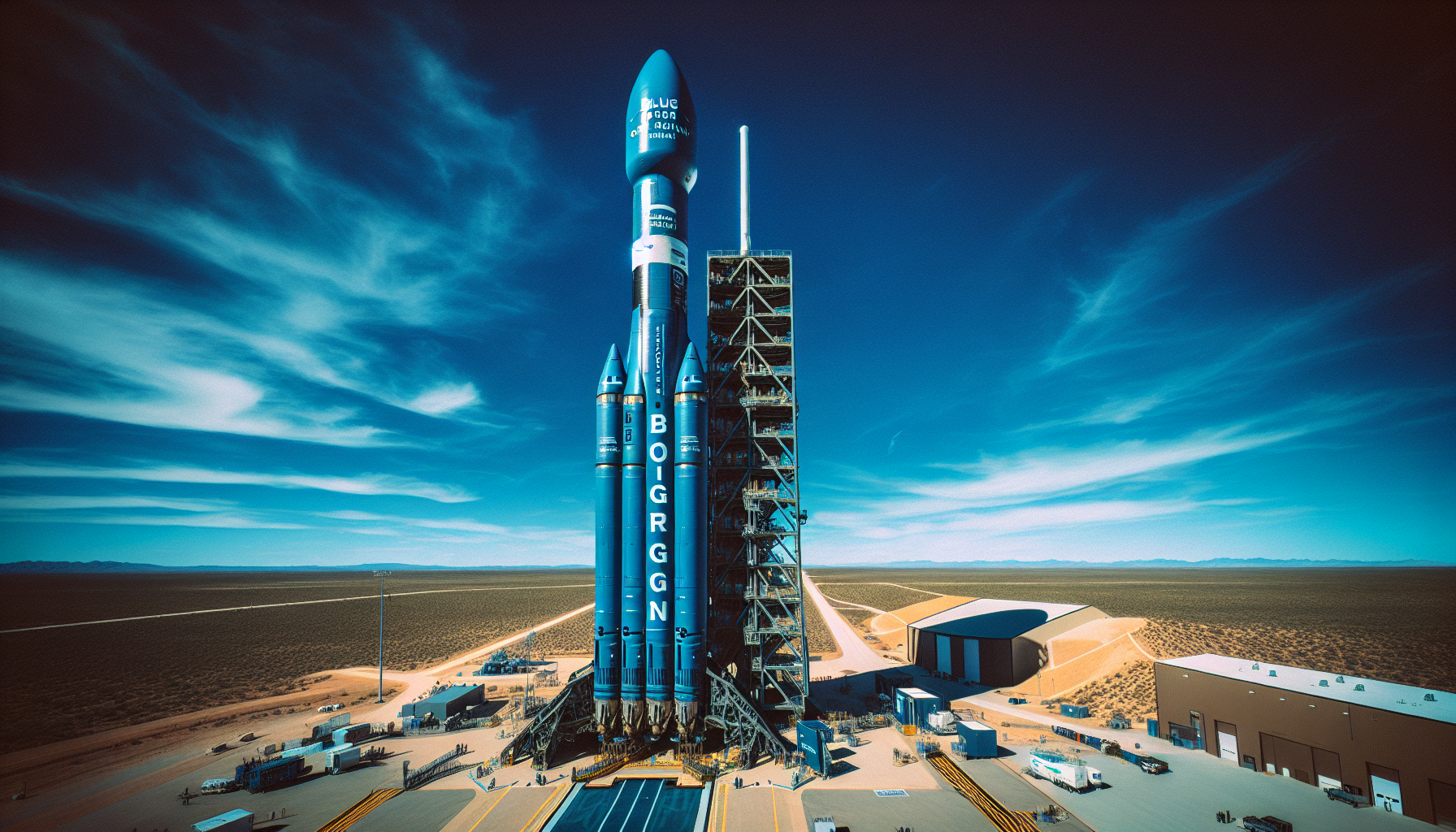
Blue Origin’s New Glenn Rocket: A Revolutionary Leap in Space Exploration
Blue Origin, the aerospace enterprise established by Jeff Bezos, is creating buzz with its New Glenn heavy-lift launch vehicle. After extensive development and testing phases, New Glenn is primed for its inaugural flight. This significant achievement represents a major advancement in reusable rocket technology and commercial space ventures. Here’s everything you should understand about this pioneering rocket and its potential influence on the future of space travel.
What is the New Glenn Rocket?
The New Glenn rocket is a colossal, reusable heavy-lift launch vehicle crafted to transport substantial payloads into space. Named in honor of astronaut John Glenn, the first American to orbit the Earth, this rocket exemplifies Blue Origin’s drive to transform space travel. Standing 310 feet tall with a payload capacity of up to 45 metric tons to low Earth orbit (LEO), New Glenn ranks among the most formidable rockets ever constructed.
Key Features of New Glenn
- Reusable Design: The rocket’s first stage is engineered for reuse up to 25 times, greatly lowering launch costs.
- Seven BE-4 Engines: Powering the rocket are seven BE-4 engines, utilizing liquid oxygen and liquefied natural gas as propellants.
- Safety and Redundancy: Designed with advanced safety features, New Glenn aims to eventually transport humans, though its first flight will be unmanned.
- Versatility: Capable of supporting a myriad of missions, from satellite deployment to interplanetary exploration.
Successful Wet Dress Rehearsal: A Key Achievement
Blue Origin recently completed a wet dress rehearsal for New Glenn, an essential test that mimics the entire launch sequence without the rocket actually ascending. During this trial, the rocket’s tanks were filled with fuel while its seven engines were ignited for a duration of 24 seconds. The test also involved a 45,000-pound payload mass simulator to replicate the conditions of a real launch.
This was the first occasion New Glenn functioned as a fully integrated system, and the test’s success was celebrated as a “monumental milestone” by Jarrett Jones, Senior Vice President of New Glenn. The Federal Aviation Administration (FAA) has also issued Blue Origin a launch license, paving the way for the rocket’s inaugural flight.
The Inaugural Flight: What to Anticipate
New Glenn’s debut flight was initially planned for October 2024 but has been postponed to guarantee the rocket’s readiness. The first mission will transport Blue Origin’s Blue Ring Pathfinder, which is part of the Blue Ring platform meant to provide spacecraft services to clients, including the Pentagon.
Although the specific launch date remains unconfirmed, the mission is projected to occur in early 2025, potentially as soon as January 6. This uncrewed flight is set to serve as a crucial demonstration of New Glenn’s capabilities and dependability.
The Future of Space Exploration with New Glenn
Blue Origin envisions New Glenn as a “massive, reusable rocket designed for significant endeavors.” Its flexibility and cost-efficiency position it strongly in the commercial space arena, competing with heavy-lift rockets such as SpaceX’s Falcon Heavy and Starship. The rocket’s capacity to haul significant payloads and its potential for human spaceflight present thrilling opportunities for scientific inquiry, interplanetary missions, and even space tourism.
Potential Applications
- Satellite Deployment: With its substantial payload capacity, New Glenn can deploy several satellites within a single mission, making it suitable for both commercial and governmental clients.
- Interplanetary Missions: The rocket’s features may facilitate missions to the Moon, Mars, and beyond.
- Human Spaceflight: Though the inaugural flight will not have passengers, New Glenn is constructed with the required safety features for future crewed missions.
Wrap Up
Blue Origin’s New Glenn rocket signifies a noteworthy step forward in reusable rocket technology and commercial space exploration. Following its successful wet dress rehearsal and acquisition of an FAA launch license, the rocket is ready to leave its mark on the aerospace sector. As we anticipate its first flight in 2025, New Glenn is poised to revolutionize the field, promising more accessible and versatile space missions.
Q&A: All You Need to Know About New Glenn
Q1: What distinguishes New Glenn from other rockets?
New Glenn’s reusability is what sets it apart from many rockets. Its first stage can be reused up to 25 times, substantially decreasing launch expenses. Furthermore, its large payload capacity and advanced safety features make it a flexible choice for diverse missions.
Q2: When is New Glenn’s inaugural flight planned?
The first flight of New Glenn is expected to happen in early 2025, possibly around January 6. The mission will carry the Blue Ring Pathfinder as its cargo.
Q3: What is the role of the Blue Ring Pathfinder?
The Blue Ring Pathfinder is part of Blue Origin’s Blue Ring platform, which provides spacecraft services to clients, including the Pentagon. The first flight will showcase New Glenn’s abilities and reliability.
Q4: Will New Glenn transport humans in the future?
Absolutely, New Glenn is built with the necessary safety and redundancy for human space travel. Although the initial flight will be uncrewed, the rocket is capable of carrying astronauts on future missions.
Q5: How does New Glenn stack up against SpaceX’s rockets?
New Glenn competes with SpaceX’s Falcon Heavy and Starship in the heavy-lift sector. While Falcon Heavy has successfully undertaken multiple missions, New Glenn’s reusability and substantial payload capacity make it a formidable rival.
Q6: What environmental advantages do reusable rockets like New Glenn offer?
Reusable rockets such as New Glenn lessen the necessity to manufacture new rocket stages for each launch, thereby minimizing environmental impact. Moreover, the utilization of liquefied natural gas as a fuel is recognized as a cleaner alternative compared to other options.
Q7: What long-term ambitions exist for New Glenn?
Blue Origin aims to leverage New Glenn for various missions, including satellite deployment, interplanetary exploration, and human spaceflight. The rocket’s adaptability and cost-effectiveness align with the company’s vision of making space travel more attainable.
Stay tuned for further updates on New Glenn’s progress as it gears up to reshape the landscape of space exploration!